Aside from always having a verb at the end, Japanese does not depend on sequence. Japanese is a grammar defined by grammar particles, functional “words” that glue on to nouns to indicate what purpose the noun serves.
Here we highlight some common Japanese particles in a slice of the ひらがな [hiragana] syllabary.
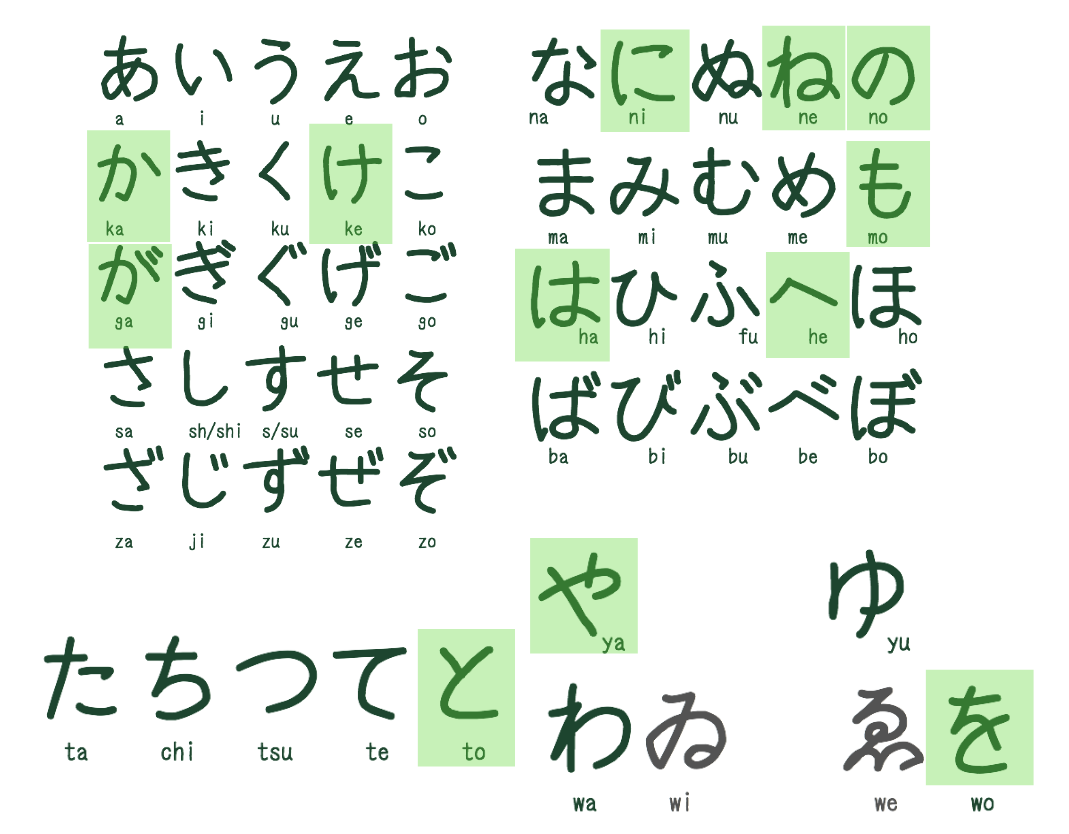
You can practice your 🎵 listening comprehension👂 of the ひらがな 🎎 here. But we digress, Japanese relies on grammatical particles to indicate the who, what, when, where, and how of a sentence.
Who, what, when, where, and how.
で (de) where and how
For example, で [“deh”] implies manner of accomplishment or setting-locality where something takes place. Mapping to English, we cover the where [setting] and how [means] with で。
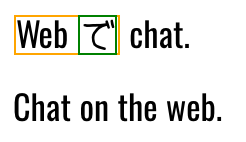
に (ni) where and when
For destinations, or specific times, or precise physical points of existence (being), Japanese relies on the use of the grammatical particle に [“ni” as in, “we are the knights who say…”]. に [“knee!”] therefore covers where [destination] and when [moment].
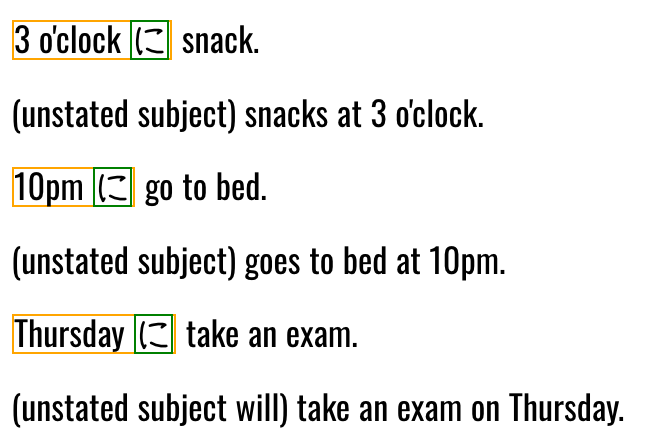
が (ga) who and what
The grammatical particle が [“ga”] is used to explain who and what when used as the grammatical subjects of a sentence.
For example: Vegetables are delicious. Candy is sweet.
(Veggies are what is delicious)
(The candy is what is sweet)
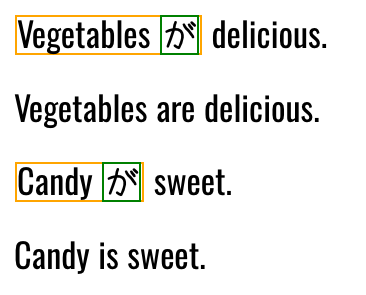
Finally, in this brief primer, we want to show the concept of bunsetsu jar which we have featured on our “Reverse Engineer Some Japanese” page.

Within a bunsetsu jar, we place a noun and cap off the jar with a lid containing a grammatical particle such as が、に、で or one of the many others.
In total, there is an estimated 233 + particles (some are multi-mora, that is, multiple letters) and we teach them in a gradual and comprehensible way in Japanese Complete.
Finally, a sentence-final verb is placed at the end of a sentence. In English, this would be akin to moving the “is/are” or “be/exists” verb to the end of every sentence. Japanese fun is. Grammar easy is. Japanese-about thinking = interesting is.
So that’s it. You pick your nouns, you pick the grammatical particles to match based on the meaning of who, what, when, where, and how, and you figure out the sentence-final verb element. Now you’re thinking in Japanese.
Of course, developing the reflex and intuition around this takes some practice, which is why we devised quizzes for Japanese Complete that help train your intuition on the particles, one-by-one. You can watch a brief video showing some of the quizzes in action on our free guide page.
Kanji in English Context
In order to accelerate Kanji comprehension into English context, as you can see in a sonnet by Shakespeare on this page. This pattern follows a similar pattern of adoption that native Japanese took: grab kanji from mainland Asia for their ideographic value and smash them together with your native syllabary to add helpful meaning, nuance, and context.
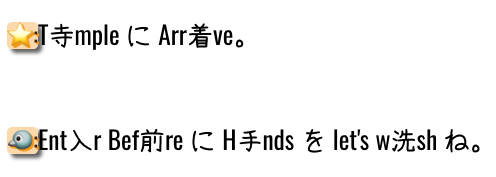
Temple NI arrive. [unstated subjects arrive to the temple]
Enter-before NI, hands OH let’s wash, NE. [before entering, let’s wash our hands, right?]
We’ve created a substack newsletter to share Kanji in English Context once or twice a month, you can sign up for it here if you’re interested in getting interesting Kanji in English Context lessons to your inbox.
One great thing about Japanese grammar is that the bunsetsu jars can be arranged in any sequence before the final verb, provided each noun has its appropriately matching grammar particle glued on and intact. This leads to great fun with parsing, as one can create a rudimentary Japanese grammar parser from a 5-line EBNF grammar.

Hopefully this post made the inner mechanics of Japanese more clear. Developing intuition and unlocking the language takes study, practice, and determination! If you’re looking for a program to break the language down logically and provide practice and training to help your newfound understanding become intuitive and fast, get a free 7 day trial for Japanese Complete.
